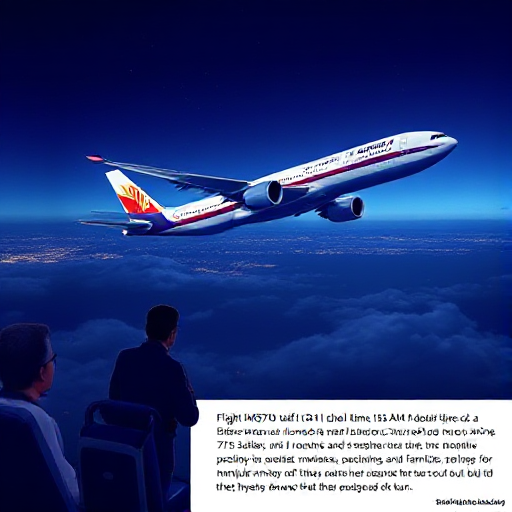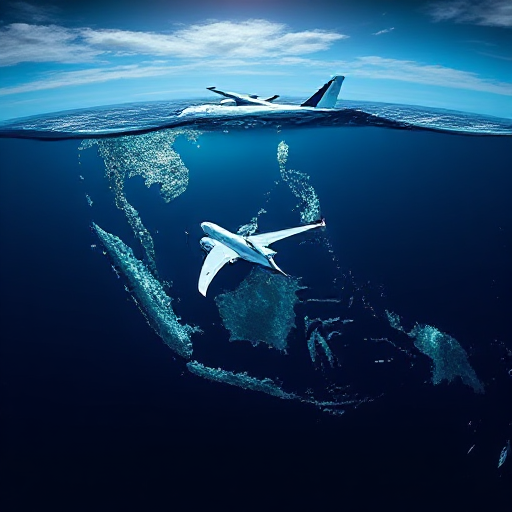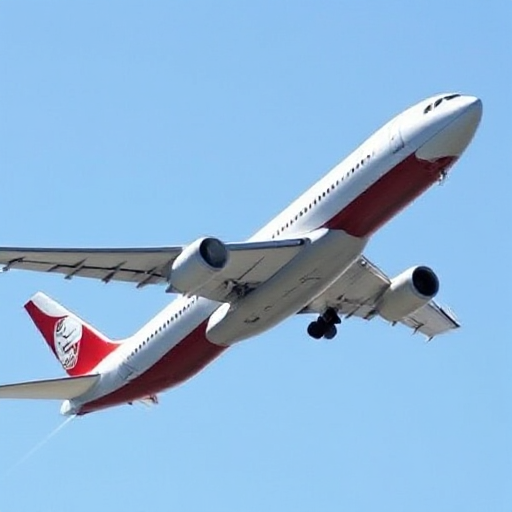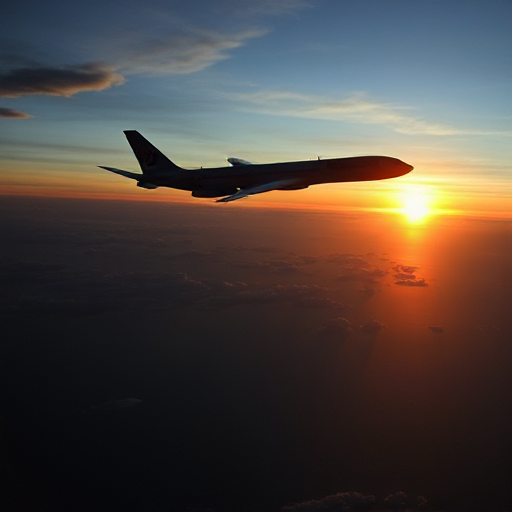Introduction
On a fateful night, March 8, 2014, Malaysia Airlines Flight MH370 embarked on a journey that would lead to one of the greatest unsolved mysteries in aviation history. As the Boeing 777 took off from Kuala Lumpur, carrying 239 souls including families, tourists, and crew members no one could have foreseen the harrowing events that would soon unfold. The plane vanished from radar, plunging into a world of intrigue, speculation, and heartbreak, leaving behind unanswered questions that continue to haunt us today.
The Flight

Flight MH370 took off at 12:41 AM local time, its destination set for Beijing. The aircraft, a Boeing 777-200ER, was renowned for its safety and reliability, making it a popular choice for long-haul flights. Among the passengers were business travelers, vacationers, and families eager to reunite with loved ones. The atmosphere was filled with anticipation and excitement, but little did they know that this journey would take a dark turn.
Timeline of Events
12:41 AM: As the aircraft lifted off, passengers settled in, some dozing off while others enjoyed in-flight entertainment.
1:07 AM: The plane communicated with air traffic control, confirming its altitude and position a routine check that would be its last.
1:19 AM: The last voice communication from the cockpit echoed through the airwaves, “Good night, Malaysian three seven zero.” Moments later, the plane disappeared from radar, leaving a chilling void.
Initial Response
The moment the aircraft went missing, chaos erupted in the control rooms. Search and rescue operations were launched immediately, with a focus on the South China Sea. Multiple aircraft and ships were deployed, but as hours turned into days, hope began to wane. The search area expanded dramatically when satellite data suggested a different trajectory, leading investigators into the vast and treacherous Indian Ocean.
The Search Efforts

The search for MH370 became a monumental undertaking, one of the largest and most expensive in aviation history. Countries came together Australia, Malaysia, China, and more each contributing resources, technology, and manpower.
Key Phases of the Search
Initial Search (March 2014): The focus was on the South China Sea, where more than 30 aircraft and ships scoured the waters, but no trace of the aircraft was found.
Expanded Search (April 2014): As satellite data emerged, suggesting a possible flight path into the Indian Ocean, the search area shifted southward, covering thousands of square miles of open water.
Deep-Sea Search (2015-2018): Utilizing advanced underwater sonar technology, the search targeted a remote area of the southern Indian Ocean, relying on calculations of the aircraft’s likely final location. Despite the efforts, the vastness of the ocean proved daunting.
Debris Findings
In July 2015, a breakthrough came when a flaperon was discovered on Réunion Island, confirming that the plane had indeed crashed into the Indian Ocean. This piece of wreckage, along with subsequent debris found along the coasts of Africa and the Indian Ocean, provided crucial evidence but did not lead to the main wreckage or the flight recorders.
Notable Debris Discoveries
Flaperon: The discovery of the flaperon ignited hope and despair simultaneously; it was a tangible piece of evidence that the plane had met a tragic fate, yet it also deepened the mystery surrounding its disappearance.
Other Debris: Fragments of the aircraft washed ashore along the coasts of Mozambique, Tanzania, and South Africa, further supporting the theory that the aircraft went down in the Indian Ocean.
Theories and Speculation

The enigma of MH370 has birthed a plethora of theories, each more intriguing than the last, captivating the minds of amateur sleuths and conspiracy theorists alike.
Pilot Involvement
One of the most chilling theories suggests that the pilot, Zaharie Ahmad Shah, may have intentionally diverted the aircraft. Proponents argue that he had the skills and knowledge to execute such a maneuver, and his personal struggles may have driven him to a tragic decision.
Flight Simulator Data: Investigators uncovered that Shah had simulated flights to remote areas of the Indian Ocean on his personal flight simulator, raising eyebrows and suspicions about his intentions. This revelation painted a picture of a man potentially grappling with inner demons, which only fueled speculation.
Mechanical Failure
Another theory posits that a catastrophic mechanical failure may have incapacitated the crew and passengers. Some speculate that a sudden loss of cabin pressure or an electrical failure could have rendered everyone aboard unable to respond.
Emergency Protocols: The lack of communication from the cockpit during such a critical time has led some to believe that the crew may have been incapacitated, leaving the aircraft to fly aimlessly. This theory raises questions about the reliability of aircraft systems and the need for better emergency protocols.
Hijacking or Terrorism

The idea of hijacking or terrorism looms large in the public imagination, fueled by the presence of two passengers traveling on stolen passports. However, no credible evidence has emerged to support this theory, and no group has claimed responsibility.
Security Measures: Despite initial fears, investigations concluded that the incident was not linked to any terrorist organization, leaving many to wonder about the true nature of the flight’s fate. The absence of a clear motive or claim of responsibility only deepened the mystery.
Other Speculations
Additional theories abound, each adding layers to the mystery:
Pilot Suicide: Some believe that Shah may have committed suicide by crashing the plane, citing emotional turmoil and personal issues. This theory is particularly haunting, suggesting a deliberate act that could have spared the passengers from a more chaotic end.
Cargo Issues: Speculations about hazardous cargo have circulated, but investigations found no credible evidence to support this idea. The lack of transparency regarding the cargo manifest has left room for speculation, further complicating the narrative.
The Legacy

The disappearance of Flight MH370 has left a profound impact on the families of the victims and the aviation industry. The quest for answers continues, and the tragedy has prompted discussions about aviation safety, tracking technologies, and international cooperation in search and rescue operations.
Impact on Aviation Safety
The mystery of MH370 has led to significant changes in aviation safety protocols, including:
Enhanced Tracking Systems: Airlines have implemented more robust tracking systems to monitor flights in real time, ensuring that aircraft can be tracked continuously, even over oceans. This change aims to prevent future tragedies and provide peace of mind to passengers and their families.
Regulatory Changes: International aviation bodies, such as the International Civil Aviation Organization (ICAO), have revised regulations to ensure better communication and tracking of aircraft. New standards were introduced requiring aircraft to report their location at regular intervals, enhancing overall safety.
Cultural Impact
The mystery surrounding MH370 has inspired countless documentaries, books, and podcasts, exploring the various theories and the emotional impact on the families involved.
Media Coverage: Major news outlets have covered every development and speculation surrounding the disappearance, keeping the story alive in the public consciousness. This relentless coverage has turned MH370 into a cultural phenomenon, with documentaries and true crime series delving into every angle of the mystery.
Public Interest: The ongoing mystery has kept public interest alive, with many amateur sleuths analyzing data and suggesting theories, creating a community of enthusiasts dedicated to uncovering the truth. Online forums and social media groups have sprung up, allowing people to share their insights and theories, fostering a collaborative search for answers.
Conclusion
As of now, the fate of Flight MH370 remains shrouded in mystery, with the exact circumstances of its disappearance still unknown. The search for answers continues, and as technology evolves, there is hope that the truth may eventually surface, bringing closure to the families and the world. The enduring enigma of MH370 serves as a poignant reminder of the complexities of aviation, the importance of safety measures, and the fragility of human life in the face of the unknown.
Final Thoughts

The story of Flight MH370 is not just a tale of loss but also a reflection of human resilience and the quest for truth. Families of the victims continue to seek answers, while the aviation industry strives to ensure that such a tragedy never happens again. The legacy of MH370 will undoubtedly influence future aviation policies and practices, as the world remains vigilant in the face of uncertainty.
As the sun sets over the Indian Ocean, the shadows of unanswered questions linger, a haunting reminder that some mysteries may never be solved, yet the pursuit of truth remains a testament to the enduring spirit of those who seek to uncover it. The story of Flight MH370 will continue to resonate, a poignant chapter in the annals of aviation history, and a reminder of the lives forever changed by its disappearance.



1 thought on “THE DISAPPEARANCE OF FLIGHT MH370: AN ENDURING MYSTERY”